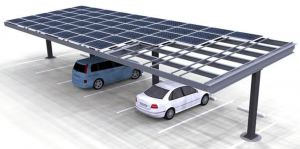When I decided to go into the solar industry, there were some apparent factors and problems that our company attempt to solve. In my mind, renewable energy is well liked and a huge buzz. Solar was respected when I started into the industry but an opportunity lied in cooperative utility market, AKA: in “the Co-Ops”.
Today, I am writing this blog from my in-law’s beach house on Pawley’s Island. Home after home would be absolutely perfect for solar power. Most of the homes have perfectly South facing exposure on at least one roof plane. When you walk north on the beach, every roof that you can see on the homes would be a candidate for solar. The only problem is that the utility will not buy back your excess electricty from solar from when you over produce on a normal day of production.
We must create a solution for this territory! The answer could be with the use of battery power. It feels like the utilities, both monopolies and the cooperatives know that the interconnection point (at the meter) was their control point and they were going to hold out as long as possible.
When Governor Haley passed legislation to make solar finally possible, she created a new net metering law. When a client would call or someone asked “What would it cost for me to go solar?”…one of the first questions out of my mouth was “Are you SCE&G or on a coop?” If the answer was SCE&G, then it was ON!
There should be a solution readily available for non-monopoly territories. I think it would be smart to focus and the solar market has been ignored with only SCE&G and Duke clients in SC being targeted first by the mammoth out of state solar companies.
How can law get passed that only helps some go solar? I know why the cooperatives are fighting the solar industry because they claim that they are not-for-profit and don’t make any money. They say that someone has to pay for the utility lines to be serviced. I want to help people go solar one day by taking all of their so voltage use items off the grid and on to solar with battery storage. The high demand items like dryers and HVAC units can stay on the utility.

